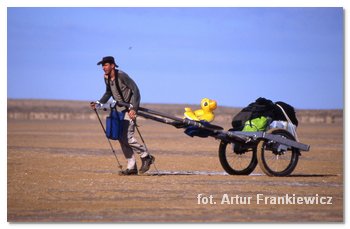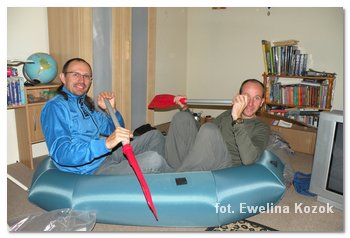Actually, this trip it's more difficult to organised than to perform. Well, maybe I exaggerate a little, but I mean to organise such an adventure with tight budget. Otherwise with the money you can easily organise vehicle backup, buying new equipment when needed, drop offs from helicopter, hiring professional guides, buying expensive permits etc. I have to organise these a little differently. Buying or renting a bicycle, horse, boat, guide, etc, sending equipment and clothing in different climatic zones, choice of optimal routes, finding the proper maps, permits, visas, safety and healthy issues, avoiding injuries, somatic recovery, as well as many other factors . Because I do not mean just to cover a distance from point A to Z. I would like to enjoy the journey.
I ask you again for any information that might help me with the preparation. I highlighted all unknowns in red colour on other pages of PLAN - Unmotorized South America Adventure. Even passing the contact details might help me much. It would be useful to have someone where I can send a post with my equipment, which I could pick up when I get there. I'm especially looking for contacts in Cochamo, Punta Arenas and Puerto Natales in Chile, Copacabana or La Paz in Bolivia and Manaus in Brazil.
I start from the beginning - before I leave Australia, I have to arrange few basic things. The list below is fairly detailed, but that's once I wrote it down I don't have to worry that I forget:
Things to do before I leave Sydney:
 - arrange trekking permit from Torres del Paine NP (Chile) to Los Glaciares NP (Argentina).
- arrange trekking permit from Torres del Paine NP (Chile) to Los Glaciares NP (Argentina).
- find sea kayak to cross Pumalin NP
- find road maps for Garmin GPS
- look for contacts with people in order to be able to send equipment
- detailed maps of western Bolivia and the Argentinean province of Santa Cruz
- book an flight ticket
Things to do upon arrival in Santiago, Chile:
- rent a car for a ride to Punta Arenas. Around 10 days, international access, unlimited kilometres. Bad luck - prices almost at $3000
- send a parcel to San Pedro de Atacama (Chile) with maps and food resupply (freeze-dried food)
- send a parcel to Copacabana (Bolivia) with maps, horse riding and river rafting equipment, and summer stuff (swapping winter gear for the summer).
- send a parcel to Manaus (Brazil) with maps and possibly a bike
- leave GPS Garmin software and prepared tracks files to re-upload to the GPS unit during my second stay in Santiago
- shopping in Santiago:
freeze-dried food
toiletries - paper, tooth paste in small tubes or sachets.
alcohol for the stove.
bike with spare tube and tire.
topographic maps from Instituto Geográfico Militar, 1:50000 No. 89 (Rio Mayer Chochrane) or 1:100,000 No 25
Sealed plastic containers – I'll put inside the food, extra batteries, maps, stove alcohol, etc. These containers I'm going to drop off along the way as I drive the car through Chile and Argentina. Going back on foot I'll be picking them up on the route.
During the drive from Santiago to Punta Arenas I wish to leave gear parcels for future pick up:
- Cochamo (I still have no contact). Bicycle and key set, screwdriver, repair kit, tubes, tire, pump, tire lever, rubber ropes, bike bags, cycling gloves and shorts, Spanish dictionary, a book. Maps and food. To pick up after around 2 months.
 - Chaiten, Pumalin NP (I still have no contact). Professional inflatable packraft with an oar. Maps and food. To pick up after around 2 months.
- Chaiten, Pumalin NP (I still have no contact). Professional inflatable packraft with an oar. Maps and food. To pick up after around 2 months.
- Rio Mayer, Argentina and Chile border. Plain inflatable packraft with an oar. Maps and food. To pick up after around a month.
- Puerto Natales (I still have no contact). Trekking equipment, maps and food. To pick up after around 2 weeks.
- Punta Arenas (I still have no contact). Spare clothes. Maps and food. To pick up after around a week.